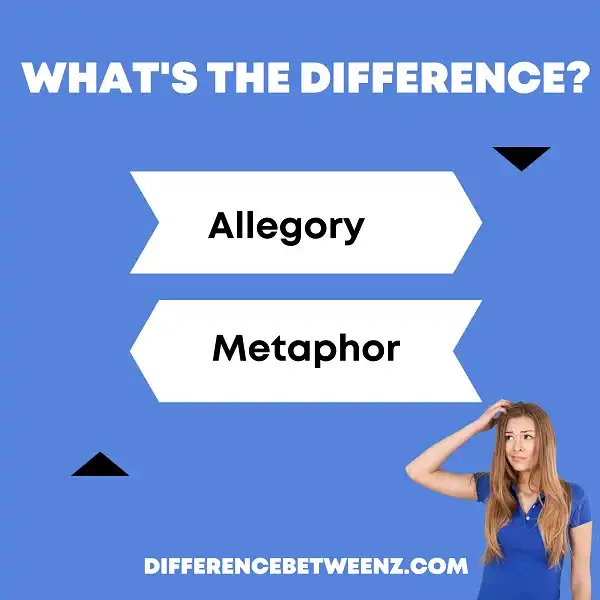When it comes to literary devices, allegory and metaphor are two of the most commonly used. While they both have similar purposes, there are some key differences between them. In this post, we’ll take a closer look at what those differences are, and discuss when it might be appropriate to use each one.
What is Allegory?
Allegory is a figure of speech that uses symbols to represent abstract ideas or concepts. The word allegory comes from the Greek word meaning “to speak figuratively.” Allegories are often used to teach moral lessons or to make a political or social point. A classic example of an allegory is John Bunyan’s The Pilgrim’s Progress, in which the main character’s journey toward salvation is symbolic of the spiritual journey toward heaven. Allegories can also be found in many works of literature, including George Orwell’s Animal Farm and Nathaniel Hawthorne’s The Scarlet Letter. Allegories are often used in stories, poems, and paintings to communicate complex ideas in a way that is accessible to a wide audience.
What is a Metaphor?
A metaphor is a figure of speech that uses comparison to express an idea or concept. Metaphors are often used in literature, poetry, and songwriting to create vivid images and convey emotional experiences. In addition, metaphors can be used in everyday speech to communicate complex ideas more effectively. For example, someone might say “I’m feeling under the weather” to describe feeling ill, or “I’m at the end of my rope” to describe feeling overwhelmed. By understanding how metaphors work, we can add richness and depth to our communication.
Difference between Allegory and Metaphor
Allegory and metaphor are two ways of using language that can be easily confused. An allegory is a story, poem, or picture that can be interpreted to reveal a hidden meaning, typically a moral or political one. A metaphor, on the other hand, is a figure of speech that employs an image, story, or tangible thing to represent an intangible quality or idea. Allegories often use metaphors as a means of conveying their hidden message, but the two are not the same. In order to better understand the difference between allegory and metaphor, let’s take a closer look at each one.
An allegory is a story, poem, or picture that can be interpreted to reveal a hidden meaning, typically a moral or political one. Allegories often use symbolism to create their effects and usually have a clear moral message. The term “allegory” comes from the Greek word “allos” meaning “other” and “agoreuein” meaning “to speak in public.” Allegories were very popular in Ancient Greece and Rome as a way to teach moral lessons without directly mentioning the subject at hand.
Conclusion
Although allegory and metaphor are often confused, they have different purposes. Allegories use characters, events, and objects to represent abstract concepts or ideas while metaphors make comparisons between two things using the words “like” or “as.” As you can see, there is a big difference between these two literary devices. Hopefully, this post has helped clear up any confusion about the difference between allegory and metaphor.


